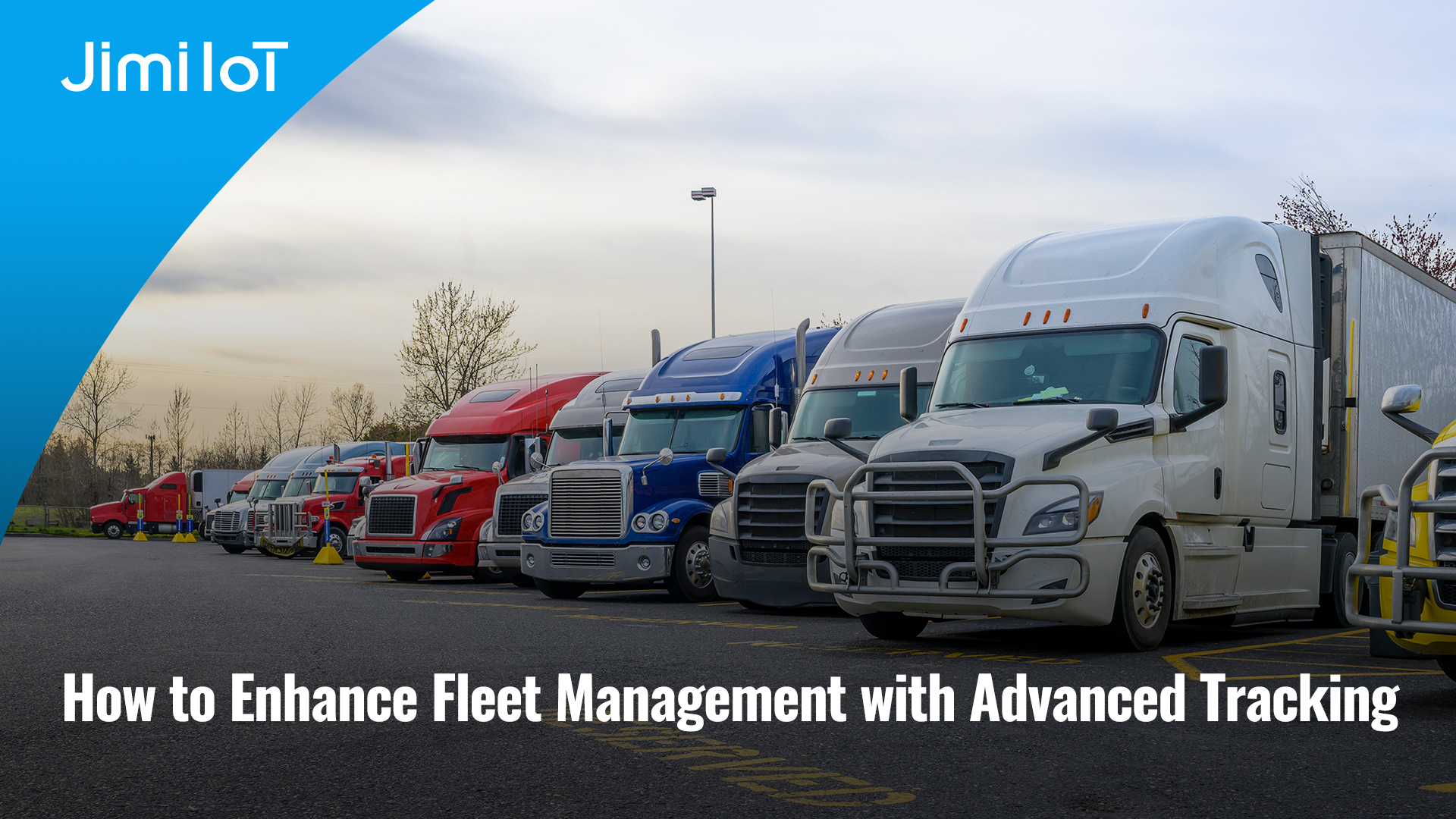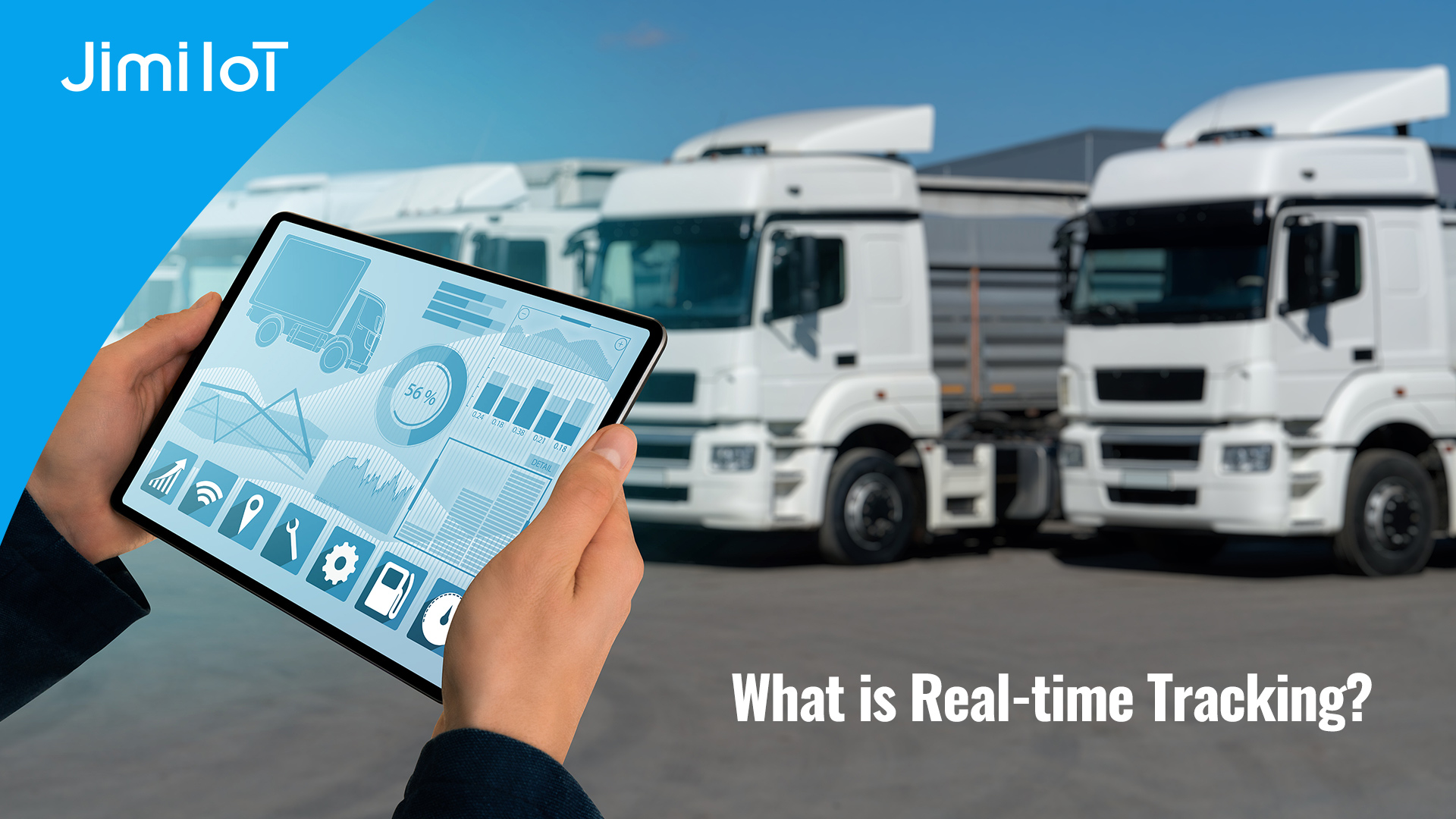Introduction
In today’s competitive business environment, efficient fleet management is crucial for ensuring smooth operations and maximizing return on investment. One of the most significant advancements in this area is the ability to track vehicles’ whereabouts while improving driver safety and vehicle security. With inbuilt features such as accurate location tracking and multiple alerts, modern tracking systems empower organizations to monitor their assets in real time, proactively manage risks, and optimize operational performance. This article explores how advanced vehicle tracking solutions can revolutionize fleet management, focusing on driver safety, asset security, and overall operational efficiency.

Fleet management has evolved dramatically over the past decade. Traditional methods, which relied on manual log-keeping and periodic checks, have been replaced by sophisticated, real-time tracking systems. These systems utilize a combination of Global Positioning System (GPS) technology, cellular networks, and integrated telematics to provide precise data about the location, status, and condition of each vehicle in a fleet. More importantly, the inclusion of multiple alert features and real-time notifications enhances both driver safety and vehicle security, making these systems indispensable for modern businesses.
The Fundamentals of Vehicle Tracking
At its core, vehicle tracking involves the continuous monitoring of a vehicle’s location and performance. Modern tracking systems are equipped with GPS sensors that relay precise coordinates to a centralized software platform. This technology not only tells fleet managers where a vehicle is at any given moment but also provides historical data and trends that are critical for strategic decision-making. With this data, companies can streamline routes, reduce fuel consumption, and minimize vehicle downtime—factors that directly contribute to improved operational efficiency and cost savings.
Accurate location tracking is the cornerstone of any effective vehicle tracking system. It enables real-time monitoring, which is essential for ensuring that drivers adhere to designated routes and schedules. Additionally, the ability to receive multiple alerts—such as notifications for route deviations, unauthorized stops, or excessive idling—ensures that any irregularities are addressed promptly, thereby minimizing risks and preventing potential losses.
Why Accurate Location Tracking and Multiple Alerts Matter
The integration of precise location tracking and real-time alerts offers several significant benefits:
- Enhanced Driver Safety:
Real-time data allows fleet managers to monitor driver behavior continuously. By tracking metrics such as speed, braking patterns, and route adherence, managers can identify risky behaviors and intervene with targeted coaching. Immediate alerts notify managers if a driver deviates from the planned route or enters hazardous areas, allowing for swift corrective action. This proactive approach helps reduce accidents, lowers insurance costs, and fosters a culture of safety within the organization. - Improved Vehicle Security:
One of the greatest challenges in fleet management is the risk of theft or unauthorized vehicle use. Advanced tracking systems can set up virtual boundaries (geofences) around designated areas. When a vehicle crosses these boundaries unexpectedly, the system sends an immediate alert. In some cases, advanced systems even allow for remote immobilization of a vehicle, preventing theft in progress and increasing the likelihood of asset recovery. These measures not only protect the physical asset but also mitigate the financial impact of potential theft. - Operational Efficiency:
Accurate tracking and real-time alerts lead to better route optimization. Fleet managers can make data-driven decisions to reroute vehicles based on current traffic conditions or unexpected delays. This results in improved delivery times, reduced fuel consumption, and enhanced customer satisfaction. Moreover, the data collected can be used to schedule timely maintenance, ensuring that vehicles remain in optimal condition and reducing the risk of unexpected breakdowns. - Cost Reduction and Increased ROI:
By minimizing downtime, preventing theft, and enhancing safety, advanced tracking systems contribute to significant cost savings. The ability to monitor every aspect of fleet performance ensures that resources are utilized effectively, thereby increasing the overall return on investment. Additionally, accurate data collection supports compliance with regulatory requirements and insurance conditions, further reducing potential costs related to legal disputes or claims.
How Advanced Vehicle Tracking Systems Work
The process of tracking vehicles with precision and providing multiple alerts involves several interconnected components:
- GPS and Telematics Integration:
Modern tracking devices are equipped with high-precision GPS modules that continuously transmit location data. These devices are often integrated with telematics systems that monitor additional parameters such as speed, acceleration, fuel levels, and engine diagnostics. This comprehensive data collection is vital for assessing vehicle performance and identifying any anomalies that may indicate unsafe driving or potential theft. - Real-Time Data Transmission:
Data collected by the tracking devices is transmitted in real time to a centralized platform, usually via cellular networks or other wireless communication methods. This immediate transfer of information ensures that fleet managers have access to the most current data available. The real-time aspect is crucial for prompt decision-making and rapid response in emergencies. - Geofencing Capabilities:
Geofencing involves creating virtual boundaries around specific geographic areas, such as job sites, depots, or restricted zones. When a vehicle enters or exits these predefined areas, the system triggers an alert. This function is invaluable for ensuring that vehicles remain within authorized zones and for monitoring deviations that could signal unauthorized usage or potential security breaches. - Customizable Alerts and Notifications:
Advanced tracking systems offer a wide range of customizable alerts. These alerts can be set up based on various criteria, including speed thresholds, unauthorized route deviations, excessive idling, and sudden stops. Alerts can be delivered through multiple channels, such as SMS, email, or in-app notifications, ensuring that fleet managers are promptly informed of any issues that require attention. - Data Analytics and Reporting:
The centralized platform aggregates and analyzes the data collected from all tracking devices. Detailed reports and analytics provide insights into vehicle performance, driver behavior, and overall fleet efficiency. This information is critical for identifying trends, optimizing routes, scheduling maintenance, and making strategic decisions that enhance operational efficiency.
Implementation Strategies for B2B Clients
For businesses looking to integrate advanced vehicle tracking systems into their fleet management operations, a strategic approach is essential. Here are some key steps to ensure successful implementation:
- Assess Your Fleet’s Needs:
Begin by evaluating the size and composition of your fleet. Consider the specific challenges your organization faces, such as theft risk, route inefficiencies, or safety concerns. A thorough needs assessment will help determine the most suitable tracking solution for your business. - Choose the Right Technology:
Select a tracking system that offers robust features, including high-accuracy GPS, geofencing, customizable alerts, and comprehensive data analytics. Ensure that the chosen system is scalable and can integrate seamlessly with your existing asset management platforms. - Pilot the System:
Before a full-scale rollout, conduct a pilot test with a subset of your fleet. This trial phase will allow you to identify potential issues, gather feedback from drivers and managers, and fine-tune the system to meet your operational requirements. - Train Your Team:
Provide comprehensive training to your staff on how to use the tracking system effectively. This includes understanding how to interpret the data, respond to alerts, and utilize the reporting tools for decision-making. Proper training is crucial for maximizing the benefits of the system. - Monitor and Optimize:
Once the system is fully implemented, continuously monitor its performance. Use the analytics and reporting features to identify areas for improvement and make data-driven adjustments to your fleet management strategies. Regular reviews and updates will ensure that the system remains effective and aligned with your evolving business needs.
Addressing Common Challenges
Despite the clear benefits of advanced vehicle tracking systems, some challenges may arise during implementation and operation. Addressing these challenges proactively is essential for achieving optimal results:
- Data Privacy and Security:
As tracking systems collect sensitive location and performance data, it is crucial to implement robust cybersecurity measures to protect this information. Ensure that your tracking system complies with relevant data protection regulations and that data is encrypted during transmission and storage. - Integration with Existing Systems:
Seamless integration with your current asset management and ERP systems is vital for a unified operational workflow. Evaluate the compatibility of the new tracking system with your existing software infrastructure and plan for any necessary upgrades or modifications. - Resistance to Change:
Employees and drivers may initially resist the implementation of a new tracking system. Address these concerns by clearly communicating the benefits, such as enhanced safety and improved operational efficiency. Involve key stakeholders in the planning and implementation process to ensure a smooth transition. - Cost Considerations:
While the initial investment in advanced tracking technology may be significant, the long-term benefits—including reduced operational costs, improved asset utilization, and enhanced security—often outweigh the upfront expenses. Perform a detailed cost-benefit analysis to justify the investment to senior management.
The Future of Vehicle Tracking in Fleet Management
As technology continues to evolve, the capabilities of vehicle tracking systems are expected to expand further. Emerging trends include the integration of artificial intelligence (AI) and machine learning (ML) to predict and prevent potential issues before they occur. AI-powered analytics can identify patterns in driver behavior, forecast maintenance needs, and optimize routing algorithms for even greater efficiency.
Furthermore, advancements in Internet of Things (IoT) technology will enable even more precise tracking and real-time monitoring. As more vehicles become equipped with IoT sensors, the data available for analysis will grow exponentially, providing fleet managers with unprecedented insights into their operations. These innovations will further enhance the ability to secure assets, ensure driver safety, and streamline fleet management processes.
Conclusion
Advanced vehicle tracking systems represent a transformative solution for modern fleet management. By accurately tracking vehicles’ whereabouts and providing multiple real-time alerts, these systems not only enhance driver safety and vehicle security but also contribute significantly to operational efficiency and cost savings. For B2B clients, investing in such technology is a strategic move that offers long-term benefits in terms of risk mitigation, asset protection, and overall productivity.
Why JimiIoT
JimiIoT is a global leader in innovative IoT solutions. We provide cutting-edge hardware and software tailored to enhance efficiency and connectivity. Our range of products includes advanced GPS tracking devices, asset management solutions, smart vehicle dashcams, and telematics platforms. With a focus on technological excellence and customer satisfaction, we empower businesses to optimize operations and gain valuable insights from data-driven analytics. Trust JimiIoT to drive positive change and unlock growth opportunities in the digital age.
If you would like more details, please visit Facebook, LinkedIn, INS, and Twitter pages for further information.
